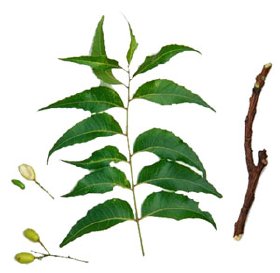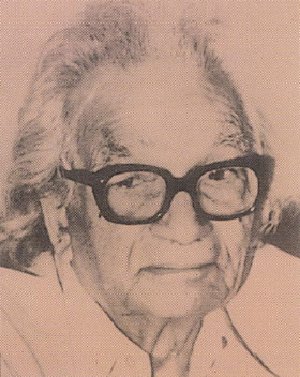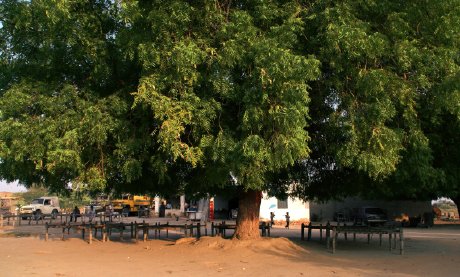Adil Najam
 It seems that the United Nations has declared Neem (Azadirachta indica) as “The Tree of the 21st Century.” I should confess that I have not been able to find an official reference to such a proclamation (especially since I was not aware that the UN would officially make such a pronouncement) but I have now found multiple references of such a designation on ‘Neem-friendly’ websites. If it is, in fact, official; I am very glad because I am a huge fan of this fantastic tree. Even if it is not, that does not take away anything from the tree, which remains deserving of acclaim and recognition. Most importantly, I am happy that it is finally getting the recognition in this century that was so hard to come by in the last century.
It seems that the United Nations has declared Neem (Azadirachta indica) as “The Tree of the 21st Century.” I should confess that I have not been able to find an official reference to such a proclamation (especially since I was not aware that the UN would officially make such a pronouncement) but I have now found multiple references of such a designation on ‘Neem-friendly’ websites. If it is, in fact, official; I am very glad because I am a huge fan of this fantastic tree. Even if it is not, that does not take away anything from the tree, which remains deserving of acclaim and recognition. Most importantly, I am happy that it is finally getting the recognition in this century that was so hard to come by in the last century.
I am specially happy because Pakistan and Pakistanis (amongst others) had a lot to do with getting the one lowly Neem tree the prominence that is is now enjoying.
Of course, the most obvious and important Pakistani connection is that the Neem tree is indigenous to Pakistan and adjoining regions (India, Pakistan, Indonesia, Malaysia). Its new-found reputation as a wonder tree full of medicinal benefits comes largely from how it has been used for ages in this region, and its reputation as “nature’s pharmacy” comes precisely from the fact that is exactly how people in Pakistan and India have used it for ages.
 But if there was one person more than all others who worked tirelessly to explore, document and propagate the scientific and medicinal properties of every part of this wonder tree – seed, root, leaf, bark – it was eminent Pakistani scientist, Dr. Salimuzzaman Siddiqui. I recall vividly how, in my only meeting with him, his passion was so very evident – not only for the Neem tree but for the wonders of scientific research. I met him in the late 1980s, by which time he was already in his 90s. Yet, the passion was alive and evident even then, and it remains my most enduring memory of him.
But if there was one person more than all others who worked tirelessly to explore, document and propagate the scientific and medicinal properties of every part of this wonder tree – seed, root, leaf, bark – it was eminent Pakistani scientist, Dr. Salimuzzaman Siddiqui. I recall vividly how, in my only meeting with him, his passion was so very evident – not only for the Neem tree but for the wonders of scientific research. I met him in the late 1980s, by which time he was already in his 90s. Yet, the passion was alive and evident even then, and it remains my most enduring memory of him.
As I looked at various Neem sites today listing all its benefits (some, obviously over-stated) I was reminded of Dr. Siddiqui: how Neem has many wonders in it, and how it can do many things – even if it cannot do everything that its fans credit it for – but it is for us and science to figure out through research what it can do and how we can best benefit from it.
Dr. Salimuzzaman Siddiqui was a tireless advocate of Neem and its many uses well before it became fashionable to be so. Indeed, my sense is that it was his ground-breaking early research that enabled others to build upon his foundations and encouraged others to follow his lead. Today there is a mushrooming (apologies for the mixed metaphor) research on Neem, but as one of the early pioneers who developed a systematic program of research around the Neem, Dr. Salimuzzaman Siddique deserves high praise for his scientific work in this area.
That pioneering work has been taken forward by other scientists and by environmentalists and environmental organizations in Pakistan and just about a year ago, in March 2010, the government of Sindh designated Neem as the official tree of Sindh. Indeed, another fan of the Neem tree is President Asif Ali Zardari, who had a Neem tree planted at his residence (please, lets keep the politics out of this one). In fact, some insight into Mr. Zardari’s own passion for the tree was provided in this October 2010 speech he made at an international conference on climate change and development, at which I had also spoken:
… when I was in prison, I would plants Neem trees or I would plant fruit trees and I had the opportunity of tasting the fruit of trees that I had planted in prison. So it is a change from within. It is what I plant in my home and what I do with my environment around me. It is what trees I select. For example when I was the chairman [of the Pakistan Environmental Council] we made Neem tree the tree of Pakistan and till to date in our government the neem tree is what I am hoping and always bring the awareness to the world on.
There are two dimensions to this tree. A, it gives you anti-pollution, secondly the wood is very non-productive for the environmental thieves that we have all around the world. (Read full speech here).
But this is not about Mr. Zardari or his speeches. This is about celebrating the Neem tree. A tree that clearly needs to be celebrated. I hope it will also get more research from a new generation of Salimuzzaman Siddiquis.




















































Must add name of Mr. Asif Ali Zardari to get actual result
Is any part of the Neem tree used in cooking anywhere else? I come from the state of Tamil Nadu and our cuisine uses it in one dish. A standard part of a traditional Tamil dinner or lunch is what is called Rasam. I can best describe it as a watery soup with lentils, spices and a souring agent – typically tamarind, tomato, lemon or some combination of these. Mulligatawny soup is derived from this and in fact even it’s name has Tamil origins (from Milagu=pepper and Tanni=water). Rasam is mixed with rice and eaten with vegetables or other sides. One variant of Rasam has dried Neem flowers in it. The flowers are added to the tempering (tarka/chaunk) which usually involves throwing mustard and cumin seeds and asafoetida into a little hot oil or ghee and adding them to the dish after the seeds have spluttered. In this variant of the Rasam, Neem flowers are used in a reasonably good quantity along with mustard and cumin. It imparts its characteristic taste to the dish, somewhat bitter but not just that. This was a regular part of the meals I had growing up.
Does anybody else know of the use of any part of the Neem tree in regular cooking?
Neem tree is also celebrated by Mrs. Elsa Kazi – wife of Allama I.I. Kazi. Being of German origin, she made Pakistan her adopted home and lived in Jamshoro- Sindh at the campus of Sindh University. Neem tree is quite in abundance in Southern Sindh. Her poem on ‘Neem’ tree was also in the English course of Class IX. I am not sure if it is still in course or not but it was there when I was in grade IX. Here is her famous poem:
THE NEEM TREE
My lovely Neem,
That intercepts sun’s scorching beam,
Yet bears the heat all day
Without the rain’s refreshing spray,
Thou charm’st the wanderer’s woe away
With soothing shade.
How strong you are, how unafraid,
How green the leaves inspite of all
The mid-day flames that burning fall
Upon thy unprotected head…
Could man be as bold as thou and rise
Above the earth, with the sheltering arm
To save the suffering ones from harm,
From sorrows, poverty and vice
Through sacrifice.
Could man be steadfast, and like thee
Face every fate, would it not be
Fulfilment of life’s lofiest dream
My lovely Neem!
-Mrs. Elsa Kazi
This post reminds me of an old Mai Bhaghee song “Kharee Neem Kay Neechay” I think it used to be the theme song of a 1980’s PTV drama serial ( I’ve forgotten the name of it but it had Huma Akbar in it and was based in Sindh, Huma potryed a folks singer from Thar desert) The song is the drama was sung by Teena Sani.
I am sure Urdu poetry and prose is filled with Neem references.
I have seen Salimuzaman Siddiqui work in his lab at the Deaprtment of Chemistry while I was studying for my honours. It was his work with Neem that he was known with then; later on I worked for a corporation that came up with an insecticide repellant that used the dried neem tree fruit extract. Hamdard also made a toothpaste using the Neem.
Neem is a womderful tree, besides medicinal properties, it provides a green atmosphere and its foliage is a good protection from the Sun’s heat. We should be planting more of Neem all over the country.